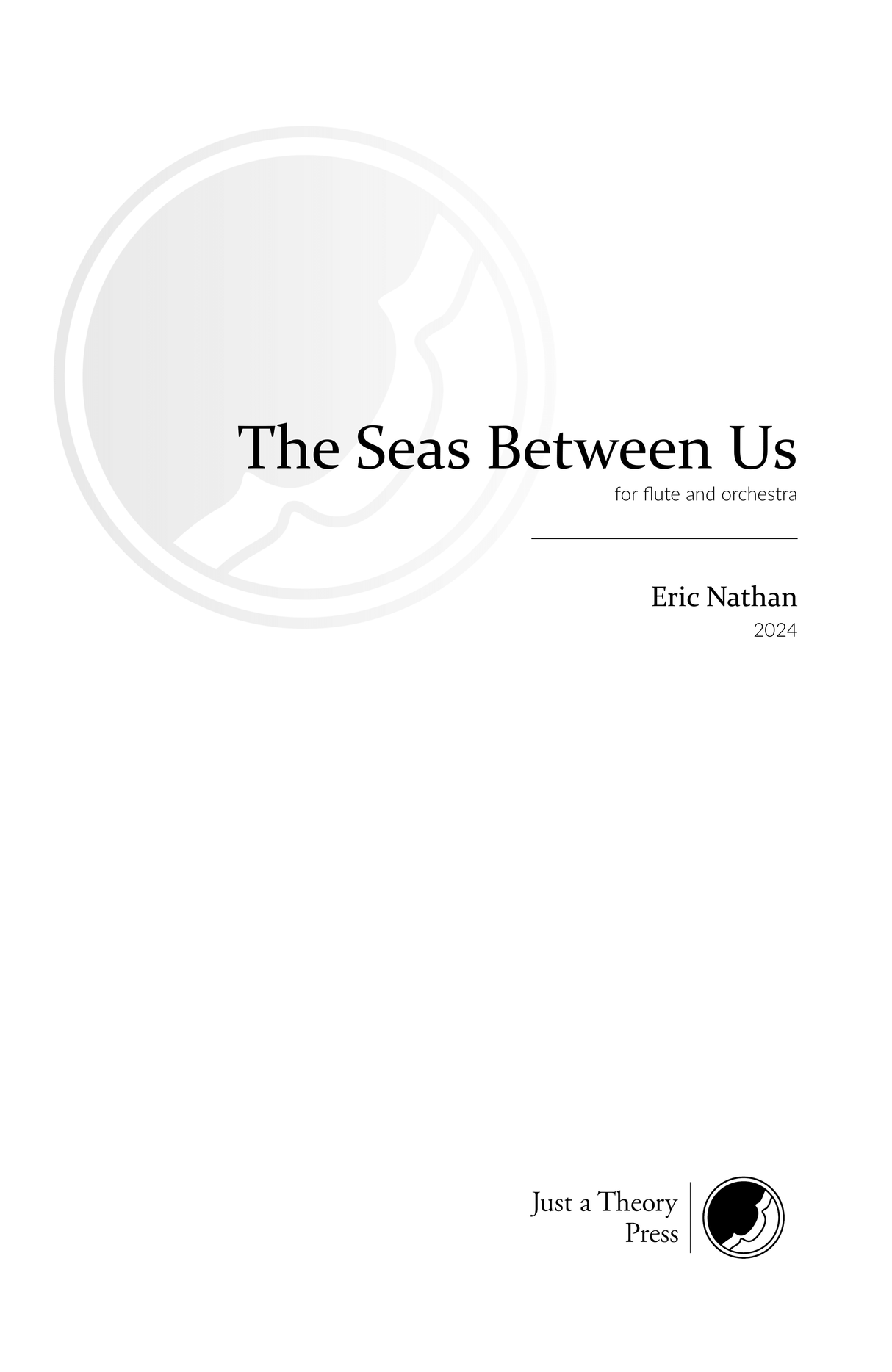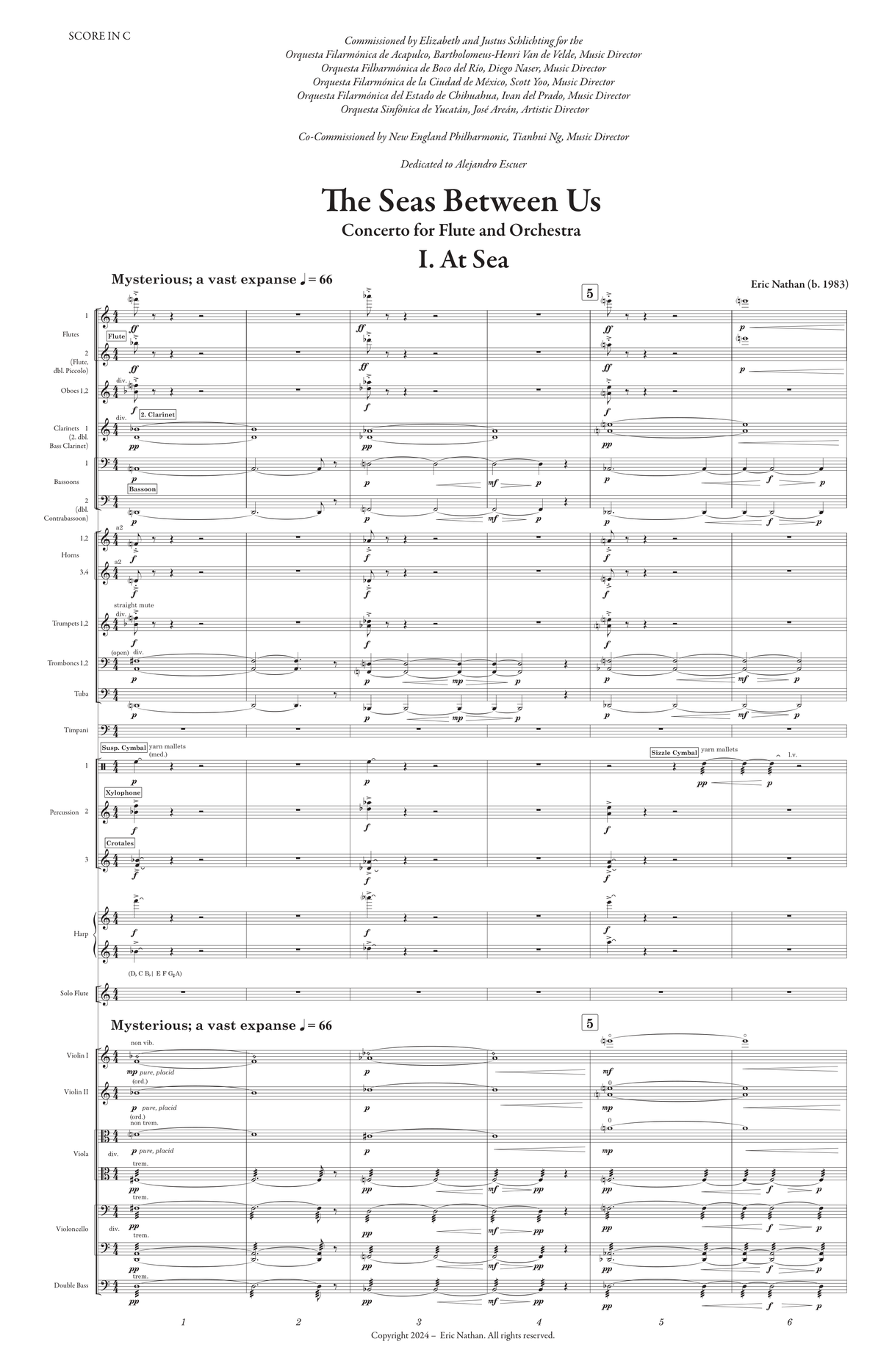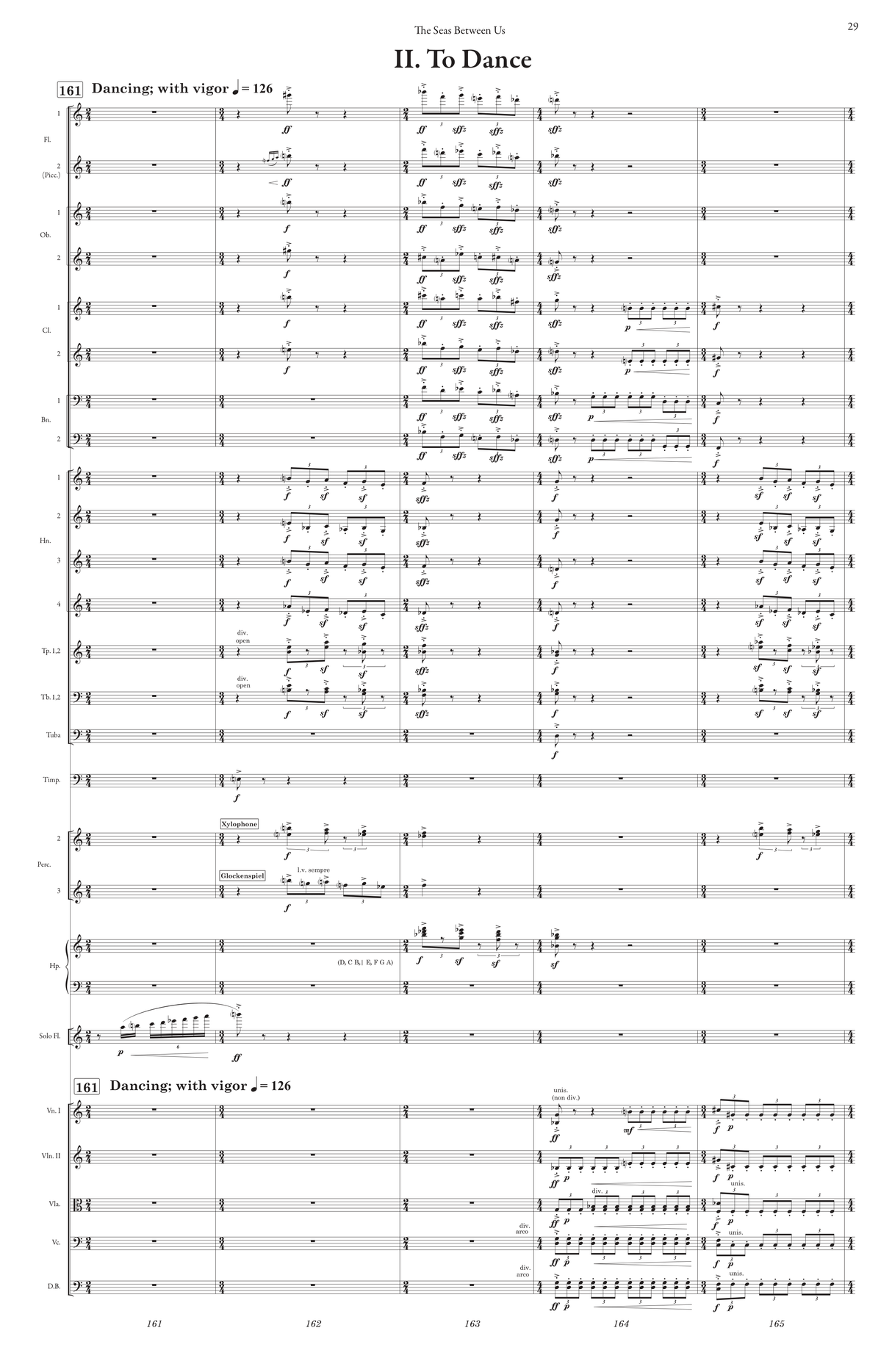Nathan: The Seas Between Us
Expected to ship in 1-2 weeks.
- Composer: Eric Nathan (1983-)
- Instrumentation: Flute, Orchestra
- Work: The Seas Between Us (2024)
- Binding: Spiral Bound
- ISMN:
- Size: 11.0 x 16.9 inches
- Pages: 101
Description
The Seas Between Us, Eric Nathan (2024) 23'
for solo flute and orchestra
Movements: I. At Sea II. To Dance III. Beyond Waves
Instrumentation: solo flute; 2.2.2.2/4.2.2.1/timp.3 perc/hp/str
I grew up close to the sea, by a tidal estuary that exhibited a dramatic range of being. On a grey, wintry day it could be so still that you could not tell where the sea ended and the clouds began, yet, during a storm, its white-capped waves could thrash so violently you dared not venture too close for risk of being swept away. On clear days, I would stand on the shore and look out across the bay imagining the open sea beyond and the faraway lands that awaited on its opposite shores.
Shortly before writing this piece, flutist Alejandro Escuer's home was destroyed by sea surf whipped up by a hurricane. I was moved by both the painfulness of this experience but also his and his family's determination to rebuild. As I began this flute concerto, I took walks by the sea, contemplating the vastness of the ocean, pondering its inherent dualities. The sea brings both destruction and new life as well as an uncertainty of the unknown paired with the rhythmic certainty of the tide that can be even more anticipated than one's next breath. It separates societies from each other and connects them. It is a home and the path to new beginnings. It encapsulates such strength, gracefulness, madness and beauty.
In this concerto I imagine the solo flute as a protagonist in a drama, a bird-like character with equal measures of innocence and wisdom, like one of poet Emily Dickinson's birds, emblematic of a hope that perches within. Over the course of the work, the solo flute brings the orchestra together and then leads it forward. The flutist comforts, mourns, yearns, pleads and dances.
The concerto is structured in three movements. The first, At Sea , begins with us cast away in a vast expanse. The second, To Dance , unites disparate elements, beginning with a festive sense of the macabre and ending with the parade-like energy of a big-band jazz march. Close in mind were the numerous world traditions that mourn death by celebrating life through dance. The final movement, Beyond Waves , begins far removed from the second. The conductor's sweeping gestures send waves of breathing sound rippling across the stage. There is a processional quality to the music, with music of both violence and intimacy. By the end we find ourselves skyward bound, gently swaying in the quiet. As I wrote the ending, I remembered the hot air balloon ride I took two months prior over the pyramid of Teotichuacán and its Avenue of the Dead. I am afraid of heights and so I thought I would be terrified, yet I was instead mesmerized by the gracefulness and solitude of being captive to the whims of the wind. I felt far removed from both my life on the ground below and the immense history of the ancient civilization we floated by, yet also more present on a path to a deeper understanding of both.
The Seas Between Us is commissioned by Elizabeth and Justus Schlichting for the Orquesta Filarmónica de la Ciudad de México, Orquesta Filarmónica de Acapulco, Orquesta Filarmónica del Estado de Chihuahua, Orquesta Sinfónica de Yucatán, and Orquesta Filharmónica de Boca del Río, and co-commissioned by the New England Philharmonic. It is dedicated to flutist Alejandro Escuer. This work was composed during a fellowship residency at MacDowell.
Publishers use a lot of words to describe what they sell, and we know it can be confusing. We've tried to be as clear as possible to make sure you get exactly what you are looking for. Below are descriptions of the terms that we use to describe the various formats that music often comes in.
Choral Score
A score for vocalists that only contains the vocal lines. The instrumental parts are not there for reference. Generally, cheaper than a vocal score and requires multiple copies for purchase.
Facsimile
Reproductions of the original hand-written scores from the composer.
Full Score
For ensemble music, this indicates that the edition contains all parts on a single system (there are not separate parts for each player). In larger ensembles, this is for the conductor.
Hardcover
Hardbound. Generally either linen-covered or half-leather.
Orchestral Parts
Similar to a wind set, this is a collection of parts. In the case of strings, the numbers listed are the number of copies included, though generally these are available individually (often with minimum quantities required).
Paperback
When publishers offer multiple bindings (e.g. hardcover) or study scores, this is the "standard" version. If you're planning to play the music, this is probably what you want.
Performance / Playing Score
A score of the music containing all parts on one system, intended for players to share. There are not separate parts for each player.
Set of Parts
For ensemble music, this indicates that there are separate individual parts for each player.
Solo Part with Piano Reduction
For solo pieces with orchestra, this is a version that contains a piano reduction of the orchestra parts. For piano pieces, two copies are typically needed for performance.
Study Score
A small (think choral size) copy of the complete score meant for studying, and not playing. They make great add-ons when learning concertos and small chamber works.
Vocal Score
A score prepared for vocalists that includes the piano/organ part or a reduction of the instrumental parts.
Wind Set
For orchestral music, this is a collection of wind and percussion parts. The specific quantities of each instrument are notated.
With Audio
In addition to the printed music, the edition contains recordings of the pieces. This may be an included CD, or access to files on the internet.
With / Without Fingering (Markings)
Some publishers prepare two copies - a pure Urtext edition that includes no fingering (or bowing) suggestions and a lightly edited version that includes a minimal number of editorial markings.








